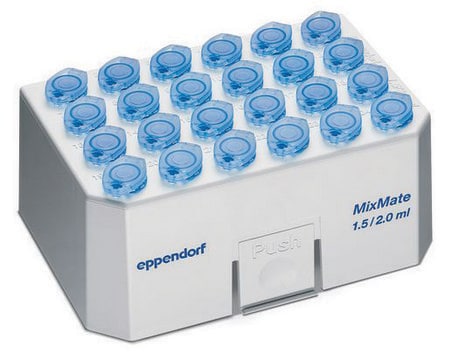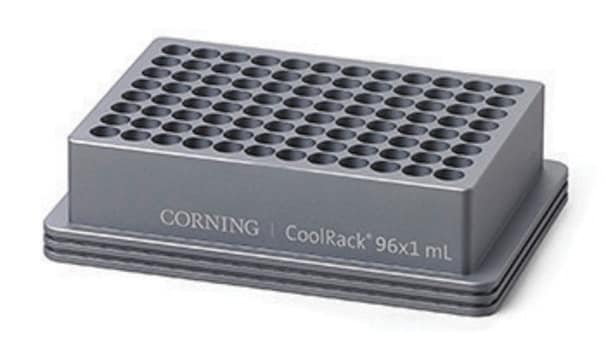HTS027RTA
Ready-to-Assay GnRH Gonadotropin-Releasing Receptor Frozen Cells
Human
Sign Into View Organizational & Contract Pricing
All Photos(1)
About This Item
UNSPSC Code:
41106514
eCl@ss:
32011203
NACRES:
NA.84
Recommended Products
General description
Millipore′s Ready-to-Assay GPCR frozen cells are designed for simple, rapid calcium assays with no requirement for intensive cell culturing. Millipore has optimized the freezing conditions to provide cells with high viability and functionality post-thaw. The user simply thaws the cells and resuspends them in media, dispenses cell suspension into assay plates and, following over night recovery, assays for calcium response.
Gonadotropin-releasing hormone (GnRH), also known as luteinizing hormone-releasing hormone (LHRH), regulates the reproductive hormonal cascade in vertebrates. Upon release from the hypothalamus, GnRH stimulates secretion of luteinizing hormone and follicle-stimulating hormone from the pituitary. In humans, the type I GnRH receptor is a GPCR that is unusual in the lack of a cytoplasmic C-terminal tail. Although some species contain a type II GnRH receptor, the human version of this second receptor appears to contain mutations that render it inactive. GnRH analogs (agonists) are used in low doses in a pulsatile fashion in the treatment of infertility, delayed puberty and cryptorchidism. GnRH agonists at high doses desensitize the receptor, and are used along with antagonists in the treatment of hormone-dependent diseases (Millar et al., 2004). Millipore′s cloned human GnRH-expressing cell line is made in the Chem-1 host, which supports high levels of recombinant GnRH expression on the cell surface for functional detection via the calcium signaling pathway. Thus, the cell line is an ideal tool for screening for agonists, antagonists, and modulators at GnRH.
Gonadotropin-releasing hormone (GnRH), also known as luteinizing hormone-releasing hormone (LHRH), regulates the reproductive hormonal cascade in vertebrates. Upon release from the hypothalamus, GnRH stimulates secretion of luteinizing hormone and follicle-stimulating hormone from the pituitary. In humans, the type I GnRH receptor is a GPCR that is unusual in the lack of a cytoplasmic C-terminal tail. Although some species contain a type II GnRH receptor, the human version of this second receptor appears to contain mutations that render it inactive. GnRH analogs (agonists) are used in low doses in a pulsatile fashion in the treatment of infertility, delayed puberty and cryptorchidism. GnRH agonists at high doses desensitize the receptor, and are used along with antagonists in the treatment of hormone-dependent diseases (Millar et al., 2004). Millipore′s cloned human GnRH-expressing cell line is made in the Chem-1 host, which supports high levels of recombinant GnRH expression on the cell surface for functional detection via the calcium signaling pathway. Thus, the cell line is an ideal tool for screening for agonists, antagonists, and modulators at GnRH.
Cell Line Description
- GPCR Cell Lines
- Host cells: Chem-1
Application
Human GnRH / LHRH GPCR frozen cells for Calcium Flux FLIPR Assays.
Biochem/physiol Actions
- GPCR Class: A
- Protein Target: GnRH/ LHRH
- Target Sub-Family: GnRH
Components
Pack contains 2 vials of mycoplasma-free cells, 1 ml per vial.
Fifty (50) mL of Media Component.
Fifty (50) mL of Media Component.
Disclaimer
This product contains genetically modified organisms (GMO).
Within the EU GMOs are regulated by Directives 2001/18/EC and 2009/41/EC of the European Parliament and of the Council and their national implementation in the member States respectively.
Storage Class
10 - Combustible liquids
wgk_germany
WGK 1
flash_point_f
Not applicable
flash_point_c
Not applicable
Certificates of Analysis (COA)
Search for Certificates of Analysis (COA) by entering the products Lot/Batch Number. Lot and Batch Numbers can be found on a product’s label following the words ‘Lot’ or ‘Batch’.
Already Own This Product?
Find documentation for the products that you have recently purchased in the Document Library.
Our team of scientists has experience in all areas of research including Life Science, Material Science, Chemical Synthesis, Chromatography, Analytical and many others.
Contact Technical Service








